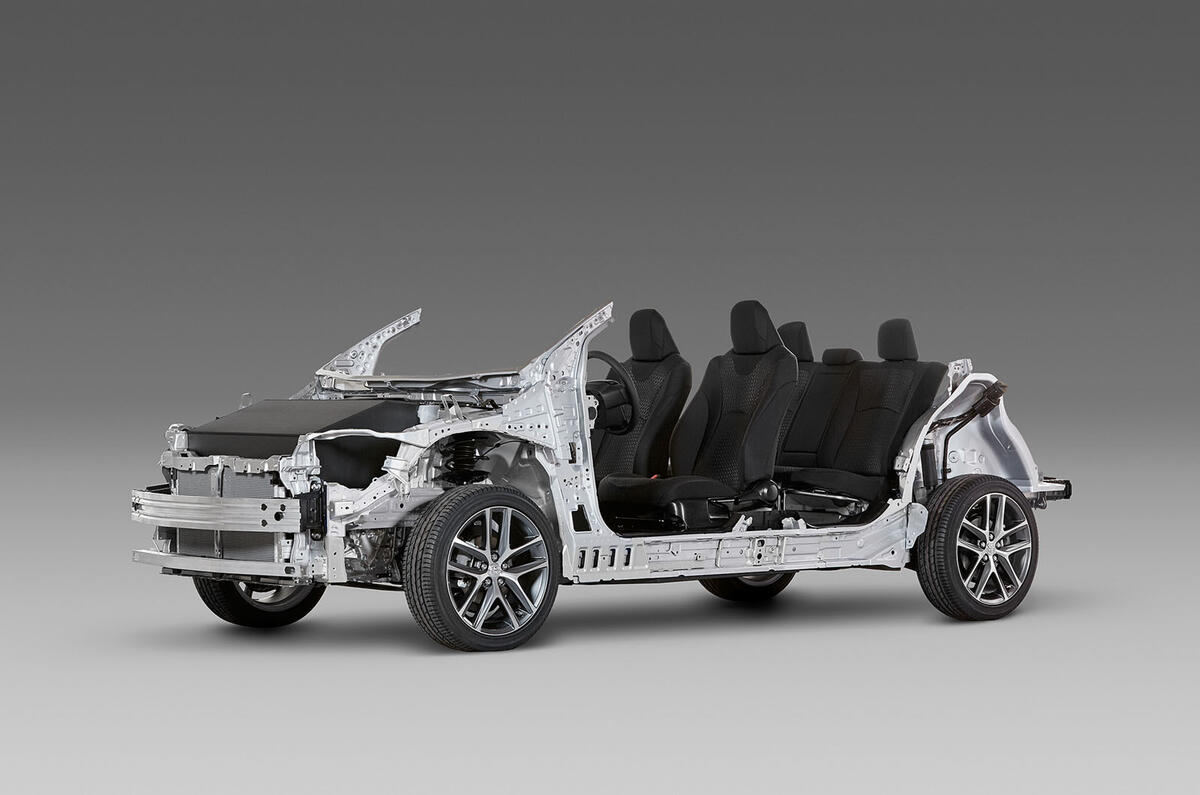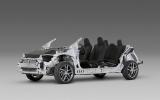Toyota has unveiled a new global vehicle architecture that the company says will "greatly improve vehicle performance and product appeal", as well as cutting development costs and massively reducing the complexity of its current global model range.
Known as the Toyota New Global Architecture (TNGA), the system is a kit of "lighter, more compact" components that will be used for a new generation of vehicles covering front and rear-wheel drive and a new, "much higher efficiency" powertrain family.
The Japanese car maker also promises much-improved handling, thanks to a lower-mounted powertrain. This, according to Toyota, endows TNGA cars with the lowest centre of gravity of any mainstream rival.
As many as 50% of all Toyota’s output by 2020 will use the TNGA architecture. This will offer a huge cost saving and reduction in complexity for Toyota, which says it currently has around "100 platforms and sub-platforms".
Toyota says the TNGA structures will be 30-65% stiffer than today’s models. That should feed into better ride and handling as well as improved crash safety.
The new TNGA engines are "much more" thermally efficient, offering around 15% more power and - in conjunction with more efficient automatic and CVT transmissions – offer as much as 25% better fuel economy.
The "fifth generation" hybrid powertrain that is bundled with TNGA is claimed to be 15% more economical than today’s Toyota hybrid models.
This new powertain family will also reduce the huge complexity of Toyota’s global engine line-up. The company estimates that, taking into account different emissions regulations and way the units are mounted in a particular platform, it has around 800 different engines.
The common parts in the TNGA architecture are almost entirely hidden from view. It covers the front end and crash structure, the actual floor structure and the rear floor and rear crash structure. Also included are the front and rear suspension systems, the whole powertrain, the radiator position, the heating and climate control unit and the steering system.
Inside, the seat frames are common but can be sited at five different heights, allowing the TNGA kit to cover all types of vehicles from superminis to MPVs.
According to Toyota, the only common visible parts in the cabin will be the steering wheel, touchscreen, gear selector and foot pedals. On the outside, the only common parts will be the door mirrors and the Toyota badge.








Join the debate
Add your comment
Despite all the recalls I
would you buy one of their cars...
Oilburner wrote:Errm, yes
I ran a Prius for 8 years and it was brilliant in terms of running costs and was a really relaxing drive that just wafted along. Sure, the interior trim was a bit plastic but the equipment level was good on the T-Spirit that I had, and it was expensive to buy for what it was back in 2004. But having said all that it enjoyed it would happily buy another or recommend one to friends or family.
I buy Toyota with my own
I find Toyota boring, but have had one for 7.5 years with only a broken sun visor, the VAG stuff I do like but they have one problem after another.
Boring is well boring, but money talks and I'd rather spend it on other things than having cars repaired. If they went back to interesting stuff (the Supra/Celica etc seems so long ago) they'd sell so many more cars.
Funny how...
RobotBoogie wrote:...people
They may well be the biggest at the moment but would you buy one of their cars? Tell me one model that leads it's market segment or that even looks like a style leader. Go on then...
jmd67 wrote:They may well be
Well the world's best selling Hybrid would be the obvious example from a UK perspective but if you asked an Australian to point out a typical van or an American to point out a typical saloon then chances are they'd both be a Toyota. The HiAce, Corolla and Camry are big news.
Granted, for UK tastes their line up isn't particularly attractive. Not helped by the brand choosing not to import some of their more interesting vehicles. I'm guessing the Alphard wouldn't sell too well but I do wonder why we never got the FJ cruiser and the iQ EV should have been a shoo in given we already had it.
And on that subject Toyota's marketing department may be partly at fault. When they do introduce something unique with potential UK appeal like the iQ they never really seem to push it.
jmd67 wrote